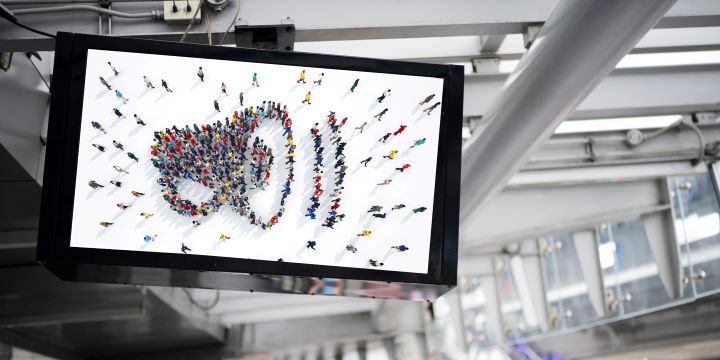Key Takeaways:
- Discover how patient care is linked with in-room entertainment.
- Understand the critical nature of cutting-edge technology in healthcare settings.
- Recognize the significance of interactivity in hospital-supplied entertainment systems.
- Learn about the considerations involved when implementing technology in hospitals.
- Explore case studies highlighting successful entertainment technology integration.
Table of Contents:
- The Role of Entertainment in Patient Care
- Technology’s Intersection with Healthcare
- The Advantages of Interactive Entertainment Systems
- Factors in Choosing the Right Entertainment Technology
- Case Studies: Successful Integration of Entertainment in Hospitals
- Designing for Diverse Patient Needs
- Privacy and Security Considerations
- The Future of In-hospital Entertainment
- Educating Staff and Patients on Technology Use
- Measuring the Impact of Entertainment on Patient Satisfaction
In today’s healthcare realm, the comfort and experience of patients are just as integral as the clinical treatments they receive. Hospitals’ atmosphere can influence their patients’ mental well-being and recovery process. One such approach to improving this environment is waiting room TV advertising. This medium securely caters to patient entertainment and hospital service awareness harmoniously.
Patient stays can be radically transformed with this technology, offering much more than distraction. Engaging with content that is comforting and of personal interest can significantly enhance their hospital experience. These solutions address a necessity for personalized care often overshadowed by the primary focus on medical treatment. This article delves into why and how entertainment solutions are now a key component of superior patient care and how they shape hospital stay’s future.
The Role of Entertainment in Patient Care
Entertainment in healthcare isn’t just about passing the time; it has significant psychological benefits, helping to alleviate stress and anxiety, which are common among patients. An engaging selection of television programs, movies, or music can provide much-needed comfort and distraction from pain or discomfort. Indeed, the psychological impact of entertainment on patient well-being is supported by evidence that suggests that such amenities can contribute to positive patient outcomes. Access to TV and radio has proven psychosocial benefits that can aid in patient recovery and enhance the hospital experience.
Technology’s Intersection with Healthcare
The bond between technology and healthcare is strengthening, with the former playing an increasingly crucial role in enhancing patient care quality. Implementing modern entertainment systems within medical settings is one such innovation that illustrates how patient experience is being prioritized. The integration needs to balance technological advancements with the essential human touch of healthcare. Rich in potential and possibilities, technology-driven solutions pave the way for a revolution in how patient care is perceived and delivered.
The Advantages of Interactive Entertainment Systems
Interactive entertainment systems forge a path for patient autonomy by granting them control over their environment, thus offering a sense of empowerment. A curated range of multimedia content can substantially alter the ambiance of a patient room, transforming it from a clinical space to a personal haven. The benefits are multifold, providing entertainment and improving cognitive activity and mood, aiding healing. To illustrate, by leveraging such techniques as on-demand programming and gaming options, patients experience an enhanced sense of personal space and comfort within the hospital premises.
Factors in Choosing the Right Entertainment Technology
Selecting the most suitable entertainment technology for a healthcare facility is a multi-faceted decision-making process. It entails assessing the system’s adaptability to the existing infrastructure and its accessibility across varied demographics, including children and seniors, and determining whether the technology proves cost-effective. Hospitals must take a strategic approach by choosing systems that offer quality entertainment and stand the test of engagement and functionality without unnecessarily escalating costs.
Case Studies: Successful Integration of Entertainment in Hospitals
Hospitals across the globe have started to recognize the sheer impact of entertainment technologies on patient satisfaction and retention. It is depicted through various case studies where implementing such systems has resulted in a noteworthy surge in patient experience ratings. The success stories serve as a beacon, demonstrating that integrating technology into patient care goes beyond medical treatment and encompasses improving patients’ psychological and comfort needs during their stay.
Designing for Diverse Patient Needs
A genuinely inclusive entertainment system within a hospital environment acknowledges the diversity of its patient population. Recognizing a spectrum of cultural backgrounds, languages, and age groups is essential. Content should be carefully selected for children, seniors, and non-English-speaking patients. Hospitals may convey a powerful message of compassion and understanding to each patient who enters by providing multicultural, multilingual, and age-appropriate options.
Privacy and Security Considerations
With the introduction of any new technology, especially within the sensitive healthcare environment, privacy and security must be at the forefront. Hospitals must implement amusement programs that protect patient data and adhere to strict health laws. Ensuring data confidentiality while providing quality entertainment is a delicate balance that must be achieved to adopt such technologies successfully.
The Future of In-hospital Entertainment
The horizon of in-hospital entertainment is expanding to include futuristic technologies such as virtual reality (VR) and augmented reality (AR), promising a new era of patient engagement. These emerging tools could revolutionize patient education, therapy, and relaxation practices. Industry experts predict a surge in such immersive experiences, which are foreseen to transform the standard of patient care and enhance the healing environment.
Educating Staff and Patients on Technology Use
Proper education and training for hospital staff and patients are essential to leverage entertainment technology’s benefits fully. A concentrated effort to make systems user-friendly and accessible means that patients of all ability levels can efficiently utilize the technology. Continuous support, education, and troubleshooting ensure smooth operation and optimal utilization of these tools within the hospital setting.
Measuring the Impact of Entertainment on Patient Satisfaction
Accurately measuring the impact of entertainment on patient satisfaction is paramount when gauging the success of such technological interventions. Hospitals can directly link patient experiences with entertainment by implementing feedback tools and satisfaction surveys. It highlights areas of success and sheds light on potential improvements, ultimately guiding hospitals in refining their offerings for continued excellence in patient care.




